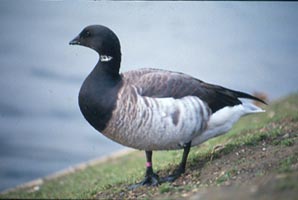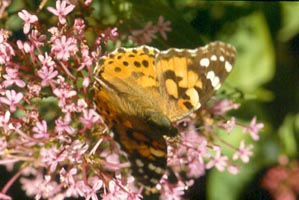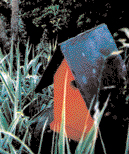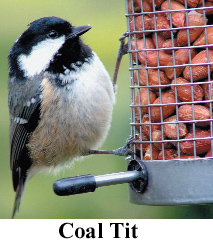| Dalkey Tidy Towns |
  |
| Dalkey Tidy Towns |
  |
|
Wildlife
Newsletter for the Township of Dalkey December 2012 - Michael Ryan |
| The
year began with us getting very worried about Killiney’s red squirrel
population, not having seen any for months, at a time of year when the short
days and leafless trees is usually the best time for sightings. But good
news came in May when it became known at least one was surviving when a adult
female was recovered in a trap, alive and very healthy. Without that one
resident red squirrel survivor of the original population of the area, a
licence couldn’t have been granted by the Parks and Wildlife Service
for the very ambitious reintroduction programme which began in mid August
when fifteen red squirrels were brought from Wexford and placed in pens on
Killiney Hill. When the squirrels were released a few weeks later some of
them ventured far afield with one heading down to Military Road near the
Holy Child school where it seems to have taken up residence while another
one headed over to Killiney Golf Club while three more make frequent sorties
across the road into a housing estate but then returning to join the rest
of the squirrels which have remained in the woods on Killiney Hill. In late
October we saw one of the released reds on top of a sycamore tree chewing
on a little bunch of winged sycamore seeds, something I’d never seen
a squirrel doing before. I mentioned this to Flavel, one of the researchers,
and she said she’d also recently seen grey squirrels eating sycamore
seeds, normally such a poor food source they wouldn’t bother with them
but due to the failure of seed crops on native trees after such a bad year
they’re getting desperate. |
|
| In
Britain the RSPB has said there’s a big influx of greys moving in to
gardens to feed on bulbs and bird seed due to a shortage of their natural
food. The Dun Laoghaire Rathdown biodiversity officer is organising a group
of volunteers who will help manage sightings from the public, carry out transects,
assist with raising awareness and fund raising in the future. If you wish
to get involved in helping the reds you can contact Mary Toomey at: mtoomey@dlrcoco.ie
One of the red squirrel researchers who comes up to the parkland every week
to radio track the released squirrels reported seeing a Great Spotted Woodpecker
on the trunk of a ash tree on the slopes of Killiney Hill in October. Acouple
of days later we heard the woodpecker making its short sharp alarm call.
The characteristic tapping sound associated with woodpeckers which is a territorial
display is usually done in spring or early summer but sometimes they will
hold a winter territory and then you might hear the deep resonant hammering
echoing through the woodlands. So for squirrels we went from possibly none
to at least 16, the introduced ones plus original survivor, but at time of
writing there still hasn’t been any sightings since July of the creatures
that brought such elation to anyone who watched them. |
|
| The
three bottlenose dolphins that frequented Killiney Bay for over two years.
I hope they went away by their own choice and not due to the malicious harassment
by humans in speedboats that was reported by a number of people. After the
cool sodden ‘summer’ we had it’s ironic to recall that before
we went away for a few weeks at the end of March I was worried that after
the unseasonal long dry spell we’d been having during winter and early
spring we might get gorse fires on the hills just as birds were nesting. There
was a fire below the DART line at White Rock but the big problem for most
birds wasn’t fire but rain, soaking nests and keeping insect numbers
low. Bound to have been a bad year especially for swifts which rely totally
on airborne insects. Two other possible threats to wildlife came this year
with the announcement that permission for exploration for gas and oil six
miles offshore had been granted and then the news that Ash Fungal Disease
had been found in parts of Ireland. Another irony is that ash trees are one of the few native trees that aren’t susceptible to ring barking damage by grey squirrels since the bark is so hard even those rodent incisors can’t break through it! Some might think it was one benefit of the cold wet summer but I’ve never seen fewer wasps as this year especially in early autumn when they normally start becoming a big nuisance when they’ve left their nest and they come into houses. A few butterflies took to the air in late summer but the sustained low temperatures and heavy rain which would stop them flying and feeding must have sent numbers crashing. But it wasn’t all bad. A cuckoo sang on Dalkey Hill within a year and a day of singing the previous year. The sparrowhawks nested late and only produced two chicks but they were very obliging by nesting where they could be easily seen and watched as the chicks developed into noisy juveniles. And then there’s the possibility of a woodpecker joining the dawn chorus next year. |
 Room to Let |
|
 |